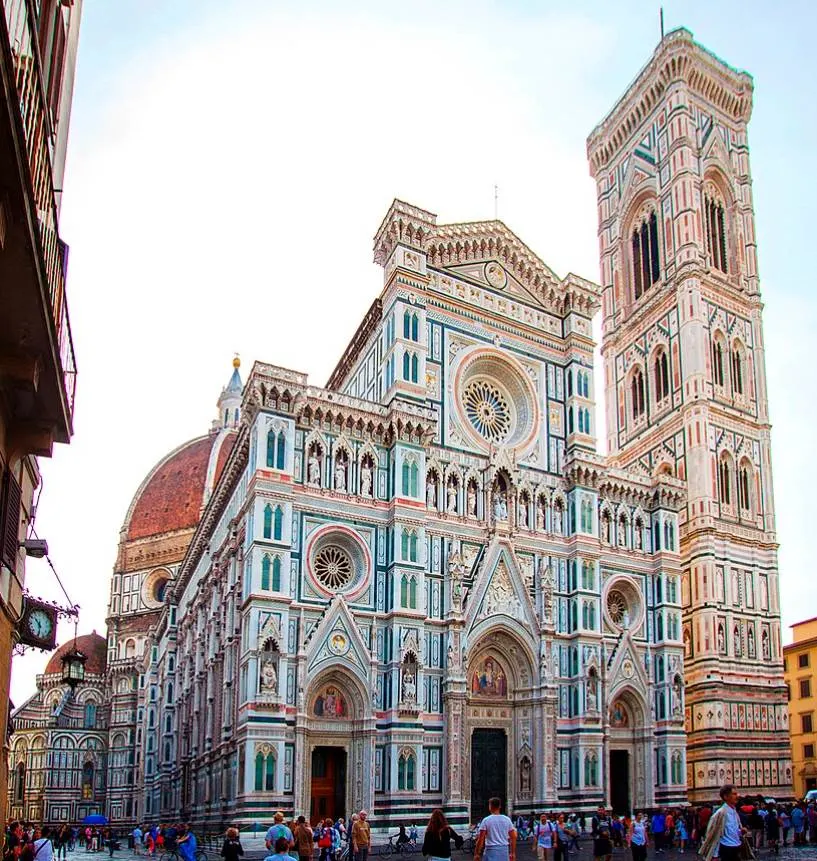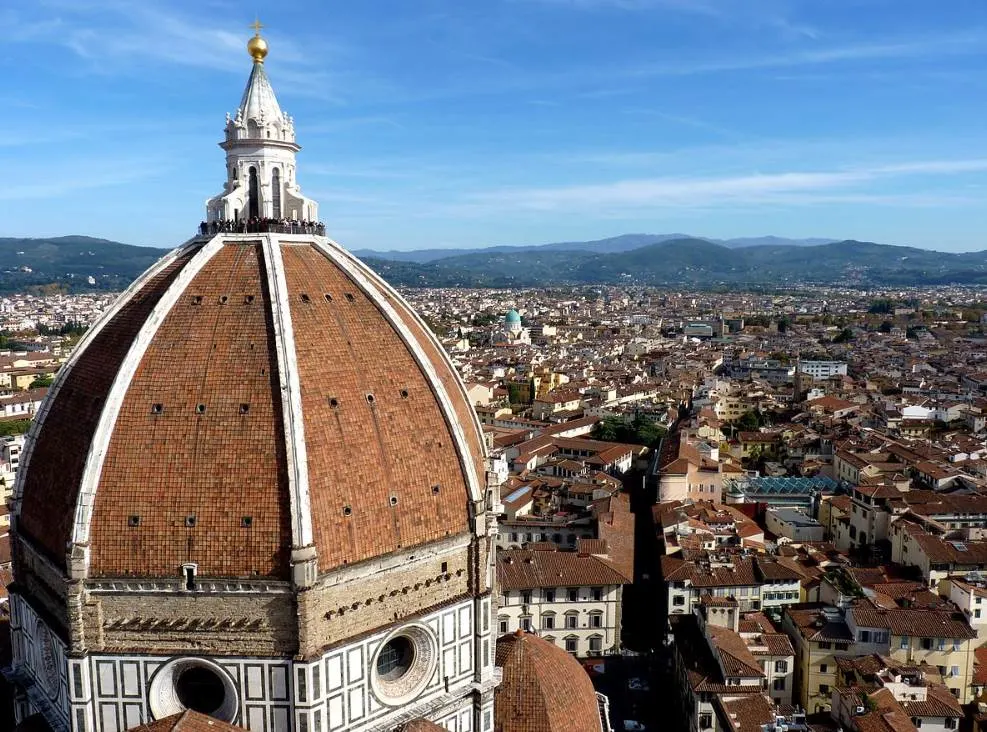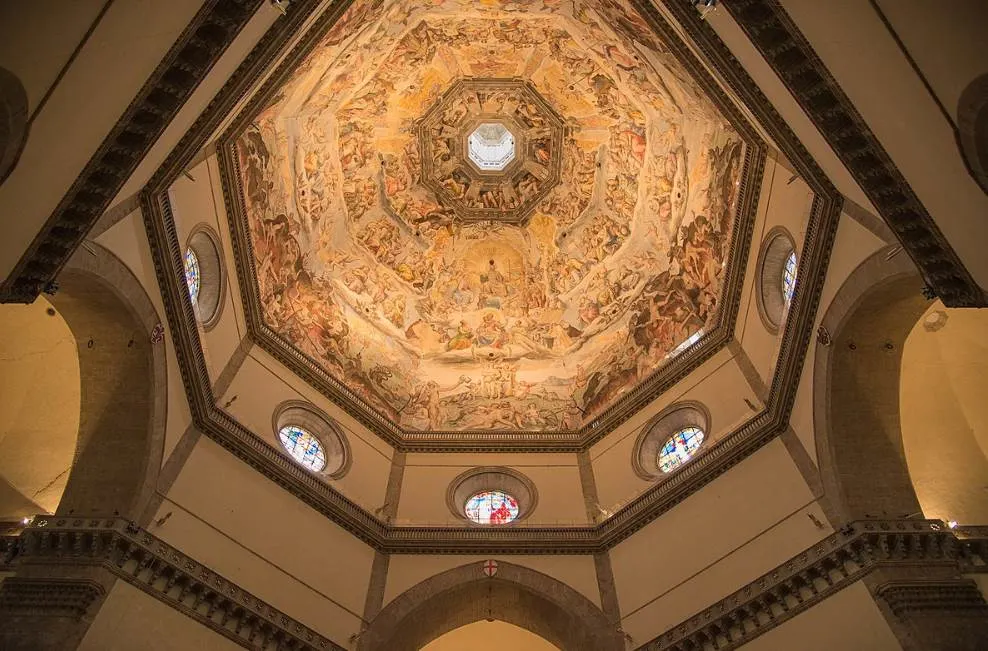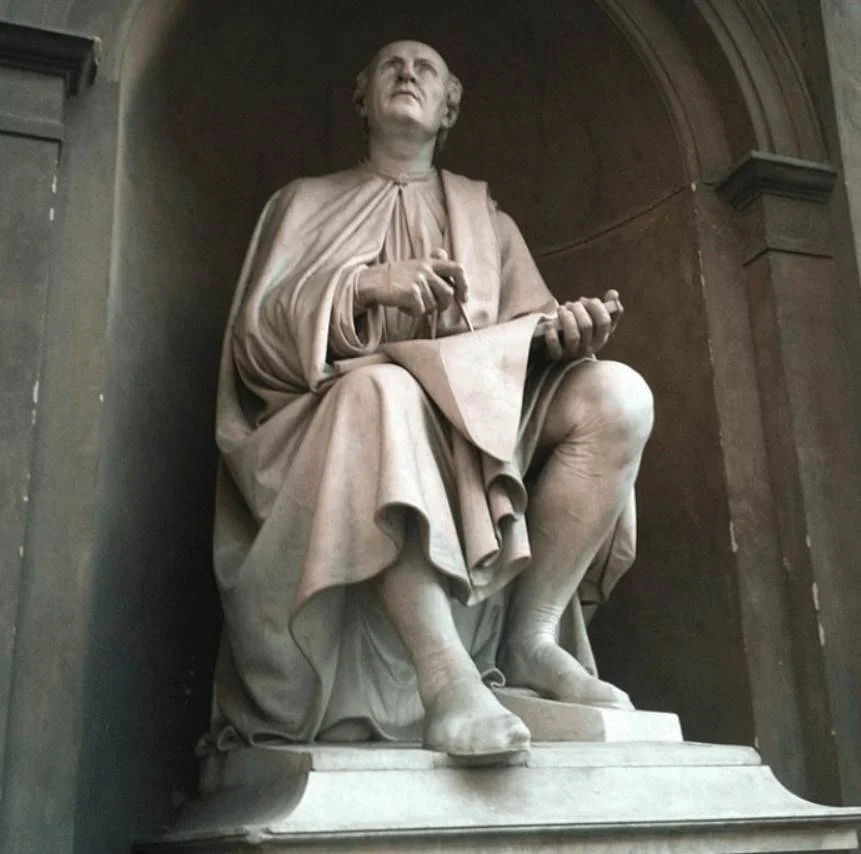One of the most fascinating domes ever constructed was completed nearly 2,000 years and is located in the heart of Rome.
The Pantheon is one of those buildings that emphasizes just how advanced ancient Roman architecture was, regardless of the fact that they didn’t possess modern-day machinery.
An equally impressive dome dominates the skyline of Florence, the capital city of the Tuscany region in central Italy and the birthplace of the Renaissance.
The Florence Cathedral dome is a masterpiece of Renaissance architecture and the Magnum Opus of Filippo Brunelleschi (1377-1446), one of the leading architects of the 15th century.
Let’s take a closer look at some of the most interesting facts about this magnificent feature of the most prominetn building in Florence.
1. The construction of Florence Cathedral already began in the late 13th century
Florence Cathedral is the common name of the famous church that is officially known as the Cattedrale di Santa Maria del Fiore. This translates to “Cathedral of Saint Mary of the Flower.”
The city had an extensive history of major religious buildings. 2 churches were constructed here in ancient times. One by Saint Ambrose of Milan in 393, and one dedicated to Saint Reparata on the location of the current building.
The ancient building was crumbling during the Middle Ages and a decision was made to replace it with a new cathedral in the 13th century.
Local architect Arnolfo di Cambio (1240-1302) designed the new building and construction started in 1296.

Di Cambio was also the architect of the Palazzo Vecchio, one of the most famous landmarks in the city.

2. The plan for the dome was completed nearly a century before construction began
Di Cambio died less than a decade after the first stone of Florence Cathedral was laid. This halted the construction for nearly 5 decades.
It wasn’t until another talented architect set his mind to the project, famous Gothic artist Giotto di Bondone (1267-1337), that things were picked up again.
Giotto designed the bell tower of the cathedral, now known as “Giotto’s Campanile.” He was one of the first architects who abandoned Gothic architecture and integrated a Proto-Renaissance style.
The architect only saw the first floor of his free-standing tower completed. It is, however, a monumental landmark in FLroece that reaches a height of 84.7 meters (277.9 feet) above the ground below.
Shortly after work on the Campanile was started, a design for the Florence Cathedral dome was made, and this was the plan that was followed.

3. The architect started by making a scale wooden model of the structure
Giotto was very influential because the design that was chosen for the dome moved away from the design elements integrated into Gothic cathedrals all around Europe.
The core ideal of Gothic architecture was to build churches as high as possible, pointing towards the sky. Because of this, flying buttresses were invented to support the massive spires.
Brunelleschi had studied the 14th-century plan of the dome and surely noticed that it didn’t feature flying buttresses.
He started out by carving a scale wooden model, as well as a brick model sculpted by his friend, famous Renaissance sculptor Donatello.
The wooden version of this model has been preserved and is on display at the nearby Museo dell’Opera del Duomo.

4. The top of the dome reaches a height of a modern-day skyscraper
One of the most amazing facts about Florence cathedral is that its lantern on tip of the dome reaches a height of 114.5 meters (376 feet) above the ground below.
That’s the equivalent of a modern-day skyscraper which is quite astonishing. This immense dome was constructed on top of an octagonal base that has a diameter of 42 meters (138 feet).
Because most of the cathedral was already completed at the time, the workers had to start building the additional structure from a height of 52 meters (171 feet) above the ground.
The architect studied a work written by Vitruvius called “De Architectura.” He replicated the ancient hoisting machines that were used to build immense structures during the Roman Empire, including the Pantheon.

5. Brunelleschi had to be creative to support the dome without flying buttresses
The hoisting machines were one problem that had to be solved, but certainly not the only one. The main issue was the lack of flying buttresses that could have supported this immense dome.
4 million bricks were piled on top of each other, and the genius invention of Brunelleschi was that he integrated both an inner and an outer dome.
The inner dome features vertical ribs that run 4 meters (13 feet) deep and which are supported by 16 rubs that run horizontally to provide support. This allows the entire structure to be self-supporting.
As you surely expected, Brunelleschi closely examined the dome of the Pantheon in Rome to get a clear idea of how the ancient Romans built the incredible dome of this Roman temple.

6. His plan of the Florence Cathedral dome served as a model for future structures
Florence Cathedral dome is still the largest brick dome that was ever constructed. That’s quite a remarkable record since it was completed between 1420 and 1436.
Although Brunelleschi didn’t leave behind plans with exact details as to how he managed to solve all the technical problems, it still served as a major inspiration for domes that were constructed all around the world.
Some of the most notable examples are the dome of Les Invalides in Paris and the dome of the Capitol Building in Washington D.C.

7. Filippo Brunelleschi also constructed several other features of the cathedral
Brunelleshi started his career as a sculptor but mainly worked as an architect on various projects in his native Florence.
The Ospedale degli Innocenti was one of the first Renaissance buildings that he designed in the second decade of the 15th century. This was followed by the Basilica of San Lorenzo and Santo Spirito.
His life project revolved around Florence Cathedral of which the dome was only one part that he designed. He is also credited with the design of the lantern on top of the dome.
His final contribution to the cathedral was the 4 exedra or “half-domes” that stick out of the monumental building. These elements are highly decorative and didn’t serve a structural purpose.
These elements would later inspire Donato Bramante (1444-1514) with his Tempietto and ultimately St. Peter’s Basilica.

8. The famous architect still admires his work from a nearby portico every day
Brunelleschi was not only buried in the crypt of Florence Cathedral but he was also eternalized with a sculpture just outside of his ultimate masterpiece.
The founding father of Renaissance architecture will forever admire the incredible dome that he designed, the first of its kind to be complete since antiquity.

